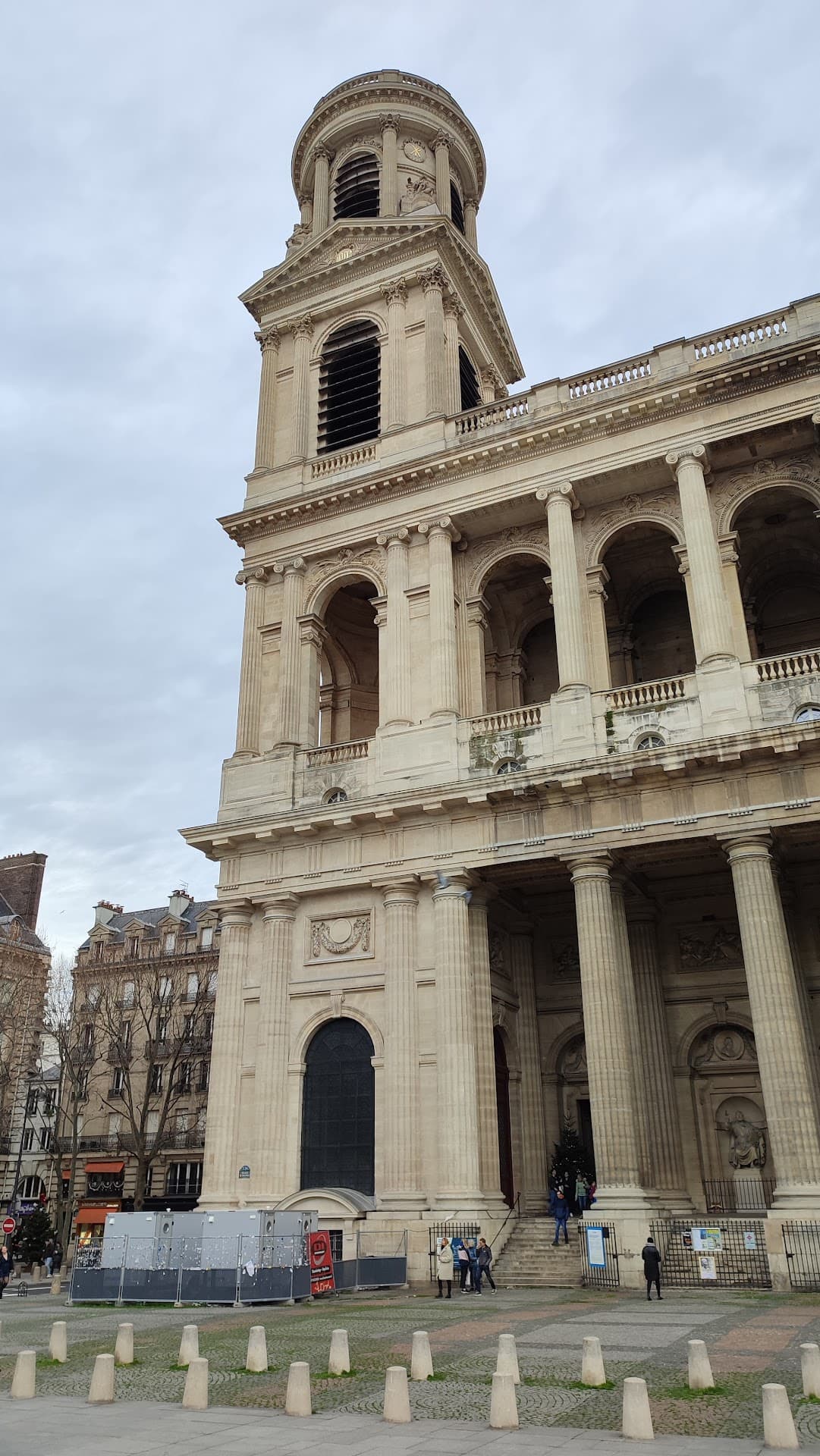Audio GuideÉglise Saint-Sulpice
17th-century Roman Catholic place of worship with an ornate facade & naturally lit painted dome.
Église Saint-Sulpice is a remarkable landmark in Paris known for its blend of spiritual, artistic, and historical elements. Built as a replacement for an earlier Romanesque church in the mid-eighteenth century, it spans centuries and showcases both Baroque and Neoclassical styles. The impressive west façade, designed by Giovanni Servandoni and later refined by Jean Chalgrin, features large arched windows and two mismatched towers that create a distinctive, thoughtful appearance.
Inside, visitors are greeted by enormous holy water fonts gifted by the Venetian Republic to King Francis I. Renowned sculptures by celebrated artists, including those by Jean-Baptiste Pigalle, enhance the sacred space. In the Lady Chapel, a striking white marble statue of Mary and a naturally lit dome adorned with a fresco by François Lemoyne contribute to the church’s serene beauty.
One unique feature is the historical gnomon, a scientific meridian line used in the eighteenth century to track equinoxes and determine the date of Easter. The church is also home to the Great Organ, a masterpiece by Aristide Cavaillé-Coll, which fills the space with inspiring music during regular Sunday concerts.
Saint-Sulpice has welcomed notable figures over time. It is known as a site for significant baptisms, including those of the Marquis de Sade and Charles Baudelaire, and it was even the venue where Victor Hugo tied the knot. The church withstood turbulent periods like the French Revolution and the Paris Commune, and it has found its way into art, literature, and film, as seen in works like The Da Vinci Code.
Today, Saint-Sulpice stands as a key cultural landmark, inviting those with an appreciation for history, art, and Parisian heritage to experience its captivating atmosphere.




